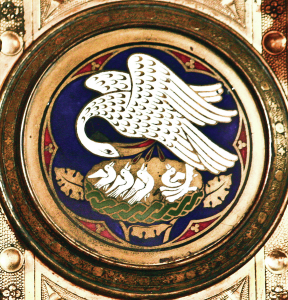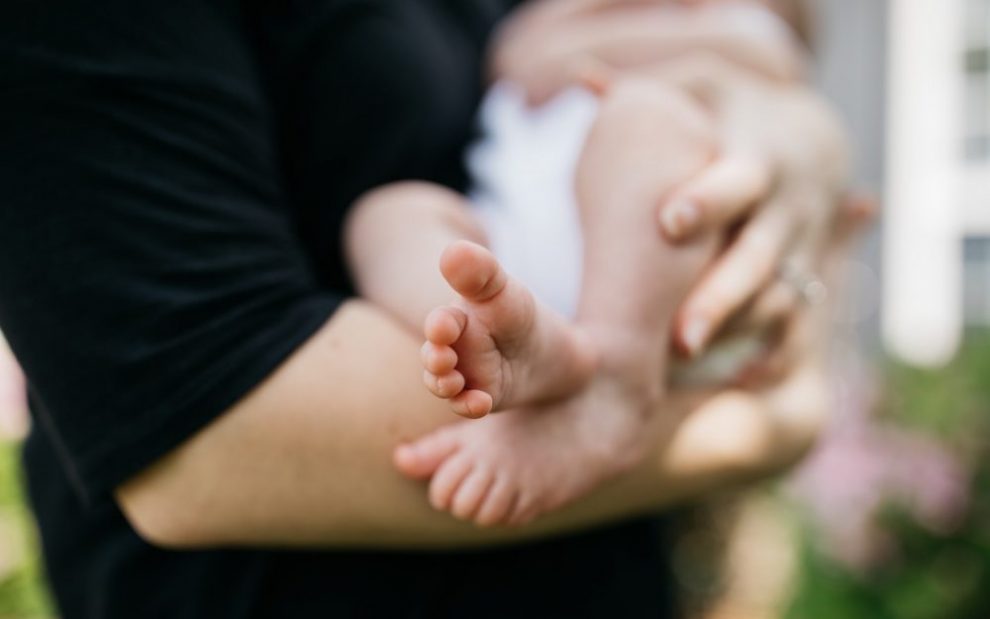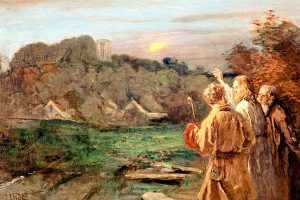I have spent the majority of the past three years of my life either pregnant or breastfeeding. While my collective 16 months of pregnancy with children born two years apart contain many moments of holy awe and wonder at the experience of begetting life, it is the cumulative 20 months (and counting) of breastfeeding that draw me deep into sacramental contemplation.

I remember once, a decade ago, asking a priest why there are sometimes images of pelicans carved into altars or depicted in church stained-glass windows. The answer is that if faced with a food shortage mother pelicans will feed their young with feathers and flesh plucked from their own breasts to the point of bleeding—they are a symbol of the Eucharist, the offering of oneself to save others.
To be honest, at the time that reason and reality seemed pretty gross. Pelicans aren’t particularly majestic birds to begin with, and picturing one plucked and bloodied is anything but appetizing. Yet I have returned to this exact image over and over again—when I’m up in a rocking chair at 2 a.m., huddled on a park bench while others play, crammed in a public bathroom with a breast pump, or when crying in pain over a clogged duct or in frustration over a baby who won’t latch.
Now that I have lived the experience of feeding another from my breasts, traditional depictions of Our Lady of La Leche—complete with flawless skin and many-layered robes—while beautiful, don’t really resonate. It is the ruffled pelican mother that helps refine my understanding of the Eucharist.
What a unique experience it is to literally feed another with your body. It requires a level of sacrifice I’ve not known before, or at least in which I’ve never before been interested in participating (that being said, many parents’ journey with breastfeeding is far more challenging than mine has been). Still, amid sacrificing certain foods, struggling to clock enough sleep each night, stressing about whether the baby is eating enough, and then panicking that he’ll want more than I have to give, I reflect in renewed awe at the gift we’ve been given in the Eucharist.
This is my body, for you. A version of Jesus speaking these words is recorded in three gospels and in one of Paul’s letters. In terms of historical accuracy, that means Jesus almost certainly actually said this. We remember it in a special way on Holy Thursday each year, but also in the sacrament every single Sunday and even during each daily Mass. It is quite possibly one of if not the most often referenced line of scripture. It is that important.
Could this be what Jesus referenced when saying, “This is my body, which is given for you. Do this in remembrance of me”?
The pelican mother’s act no longer strikes me as a distasteful and primal example of survival but rather a compelling model of how nourishment and connection reside at the core of our Catholic faith and help us thrive under any circumstances.
Breast milk, a substance of complete and perfect nourishment, is created by my body in response to the needs of my child at any given time as detected by changes in my baby’s saliva. More fat, more hydration, certain immunities—they’re all there in an instant without my ever having to think about it. Yet for being so specific my milk is still universal enough to share. As a preemie with dangerously low blood sugar, my oldest son required donor milk during his first hour of life. In turn, I donated more than 225 ounces of my breast milk to help a local mother and baby in need. Alone, we would have suffered. Together, we flourished.
Broken and shared. Is this the sort of connection Jesus sought to explain at the Last Supper—one of necessity, nourishment, dependence, and love (not just between a breastfeeding parent and baby but also with other parents and other babies and an entire support community)? Could this be what Jesus referenced when saying, “This is my body, which is given for you. Do this in remembrance of me” (Luke 22:19)? How maternal of the Christ to use this language in describing the depths of God’s love for us.
This article also appears in the March 2021 issue of U.S. Catholic (Vol. 86, No. 3, page 7). Click here to subscribe to the magazine.
Image: Unsplash/Wes Hicks














Add comment